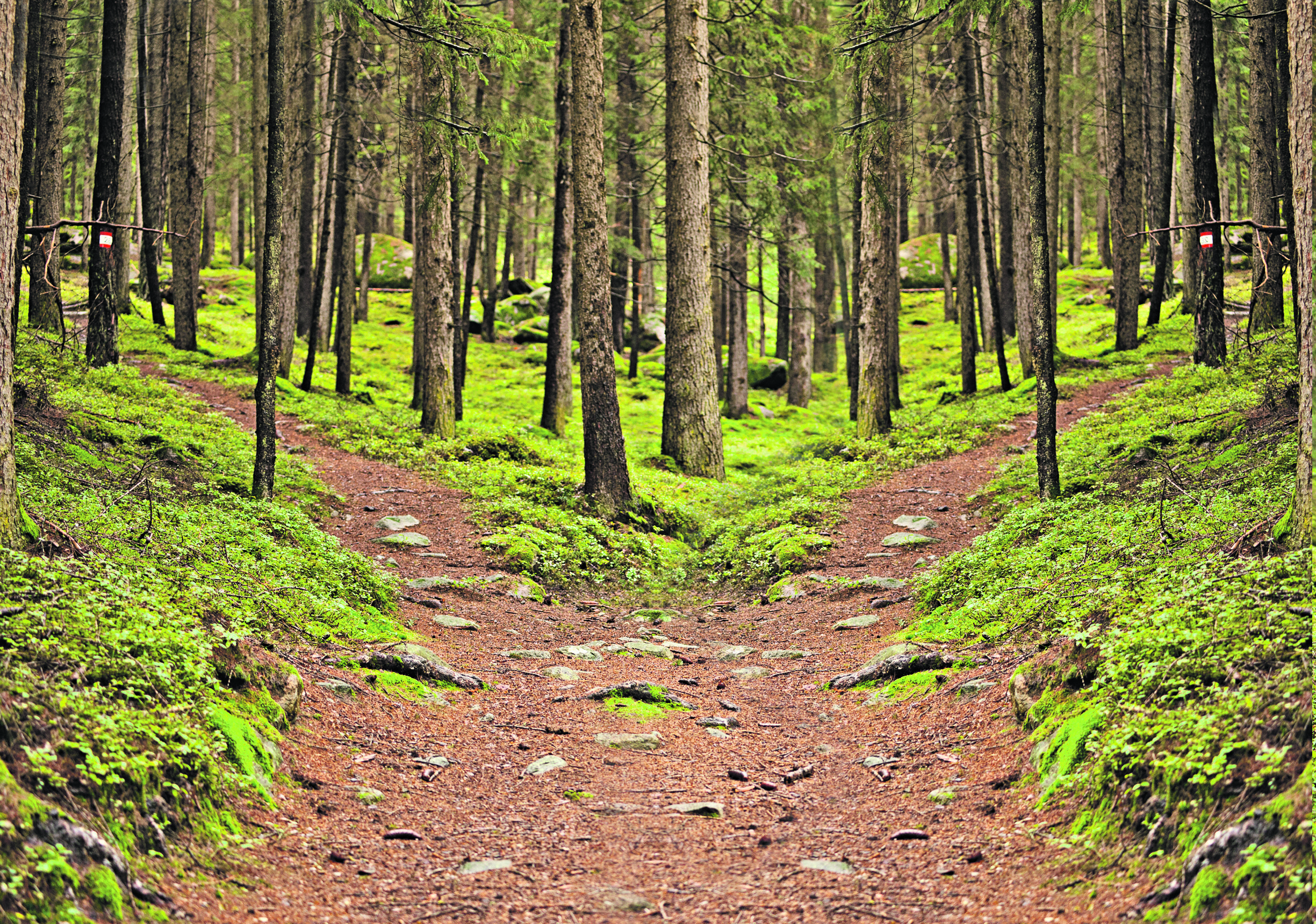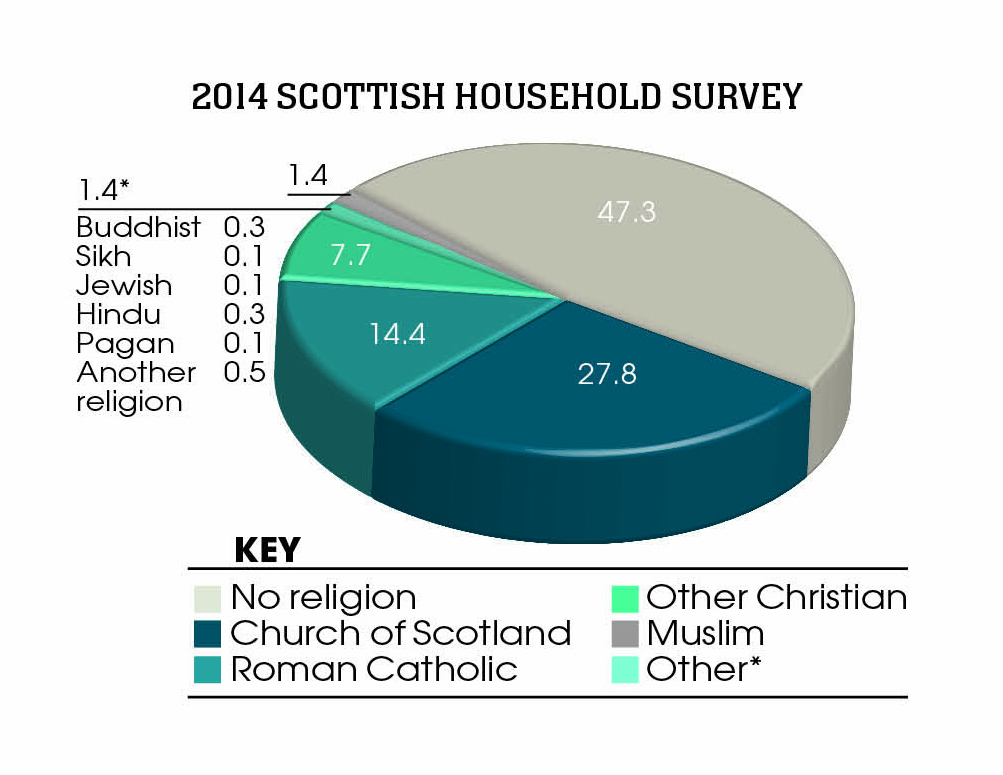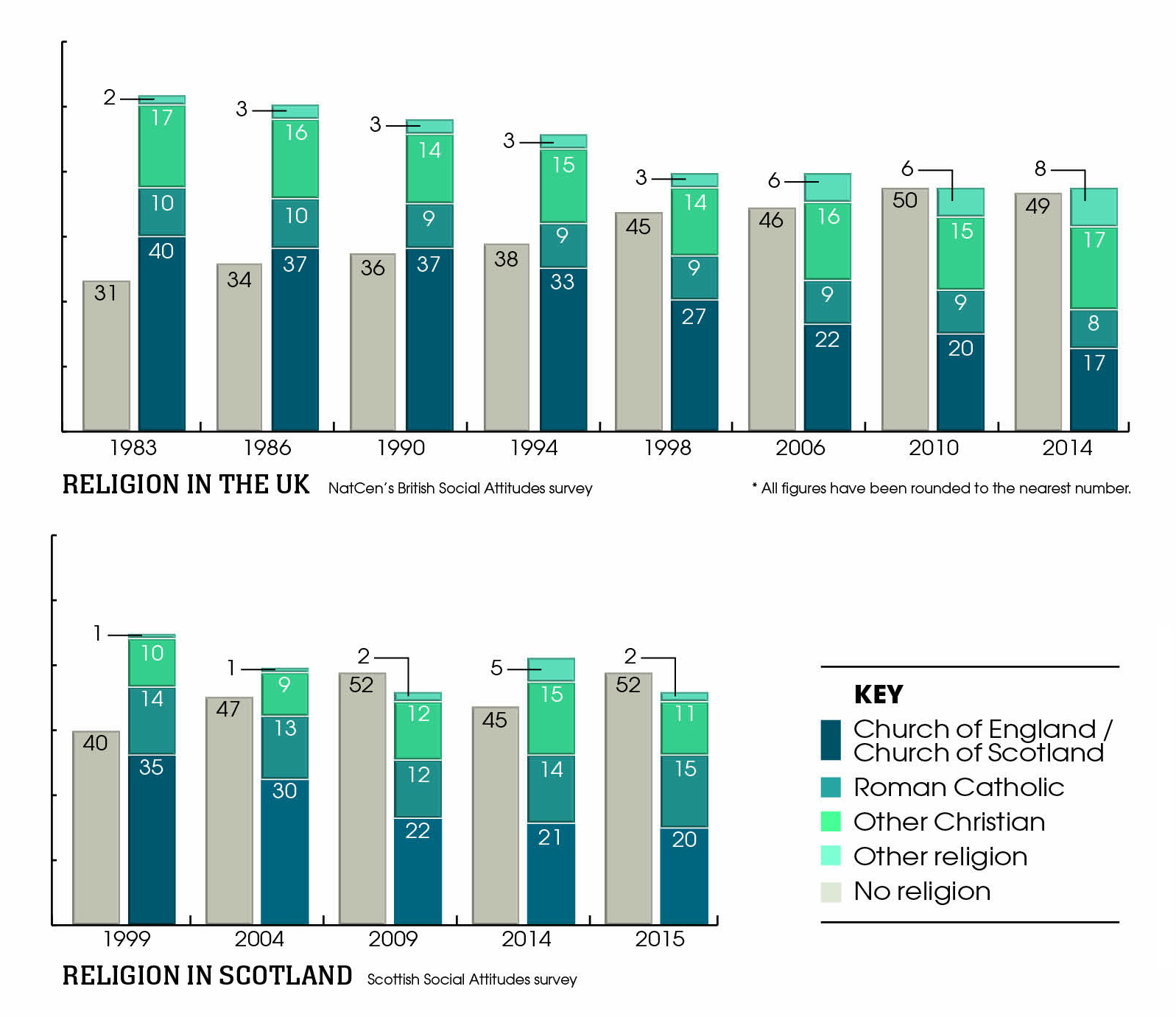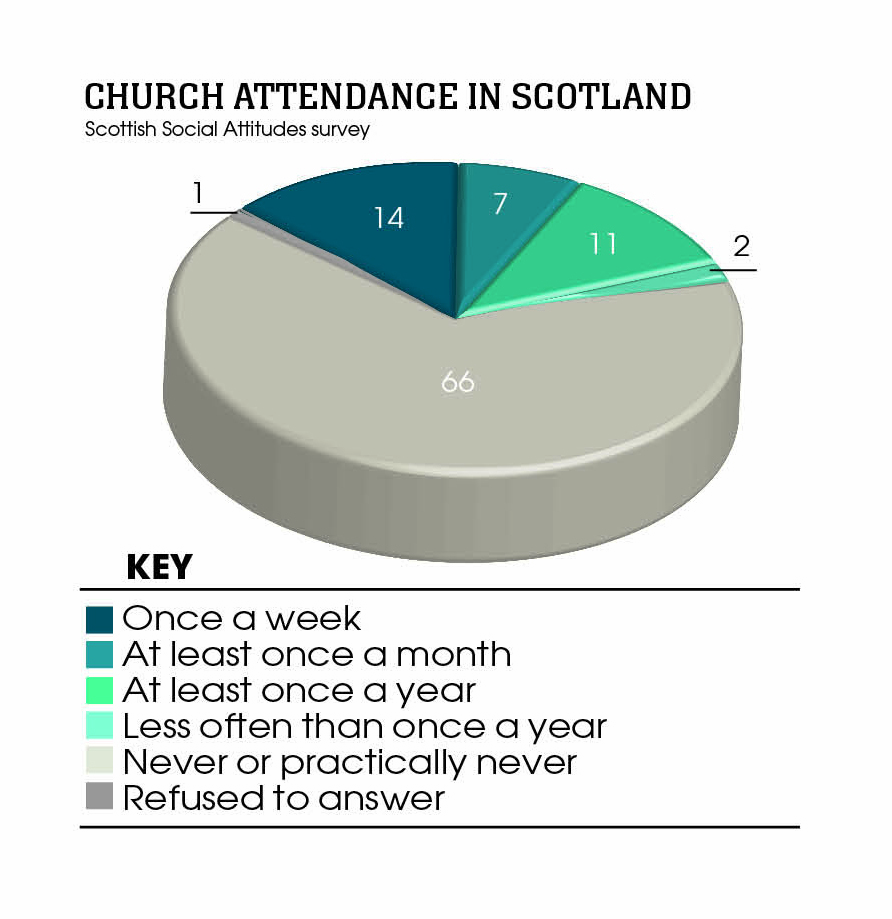
In 1964, just 3% of people said they had no religion as opposed to 74% who said they attended a church service at least once in the previous year.
But the most recent British Social Attitudes survey revealed 49% of the population now describe themselves as having no religion and 66% of Scots said they never went to church (58.4% of English).
The decline is more pronounced in Scotland. People with no religion have been the largest single group since the Scottish Social Attitudes survey began in 1999. And they have been in the majority over all believers combined since 2009. The picture is very similar in England.
The proportion of non-believers in Scotland surprisingly dipped below 50%, to 45%, in 2014. However, this was not thought due to an upsurge in religious adherence but the way the surveyors asked the question.
An internal report shown to The Sunday Post stated that in 2014 the question about religious belonging was preceded for the first time by other questions about religion.
This, it was felt, stimulated people into “reporting a largely latent religious affiliation that they would not otherwise have acknowledged”.
When the 2015 survey returned to asking a simple “Do you regard yourself as belonging to any particular religion?” the “Nos” returned to 52%.
Stephen Evans, campaigns manager at the National Secular Society, believes that the figures should act as a wake-up call and that religion no longer has a role to play in “policy making and public services.
“While there’s no prospect of religion disappearing, Britain’s religion or belief landscape has seen a seismic shift in recent decades, with more non-believers than ever before.
“In a society as irreligious as ours, where religious belief is declining and simultaneously diversifying, secularism has a key role to play in avoid society fragmenting along religious lines.
“Believers and non-believers alike stand to benefit from a secular outlook that regards religion as a private matter.”
However, the Church of Scotland insists there’s “a lot of life in the Kirk” and say the Church is undergoing a period of transition rather than decline.
Of its important role in public life it points to the CrossReach project, which is the largest third- sector provider of social care in Scotland.
Offering support to people with anything from learning disabilities and postnatal depression to drug addicts and people coping with dementia, CrossReach’s £51 million annual expenditure is funded mostly from local authorities, with the rest made up from donations and legacies.
The Kirk also points to the work of the Church of Scotland Guild, a voluntary organisation totalling 23,000 members which raises thousands of pounds each year for charity projects.
In his book, The Invisible Church, author Dr Steve Aisthorpe questions the assumption that declining numbers of people sitting in pews on Sunday morning is synonymous with a decline in people identifying with the Christian faith.
“There is decline in Christian faith in Britain, but I believe it is considerably smaller than previously assumed,” he said.
“As traditional congregations diminish, there is evidence of small informal gatherings of people coming together to explore their faith in what have been termed ‘Fresh Expressions’ of church are experiencing dynamic growth.”
Rt Rev Dr Angus Morrison, Moderator of the General Assembly of the Church of Scotland, says Dr Aisthorpe’s findings were both hopeful and challenging.
“As a Church we have to take heed of these findings, something we are already doing by investing money and resources in our pioneer ministry programme, which is bringing our Church into the wider community.”
Against the backdrop of a continual fall in the number of people identifying themselves with the Church of Scotland, Church of England and Anglicanism in the UK, the number of Roman Catholics has remained remarkably consistent.
In 1983, 10% of the population of the UK identified themselves with the Catholic Church. In 2015 it was 8%. But in Scotland the religion bucks the trend, with a 1% rise, to 15%, in the number of Catholics in the past 15 years.
A spokesman for the Catholic Church in Scotland said: “Globally, the Catholic Chuch continues to see growth and in Scotland. There are currently more students studying for the priesthood than at any time in the last 10 years.
“The census also shows that most Scots consider themselves Christian. These statistics suggest that it is atheism which faces an uncertain future, not religion.”
READ MORE
10 questions for Adrian Chiles
History of Celts to be explored at Edinburgh’s National Museum of Scotland

Enjoy the convenience of having The Sunday Post delivered as a digital ePaper straight to your smartphone, tablet or computer.
Subscribe for only £5.49 a month and enjoy all the benefits of the printed paper as a digital replica.
Subscribe

